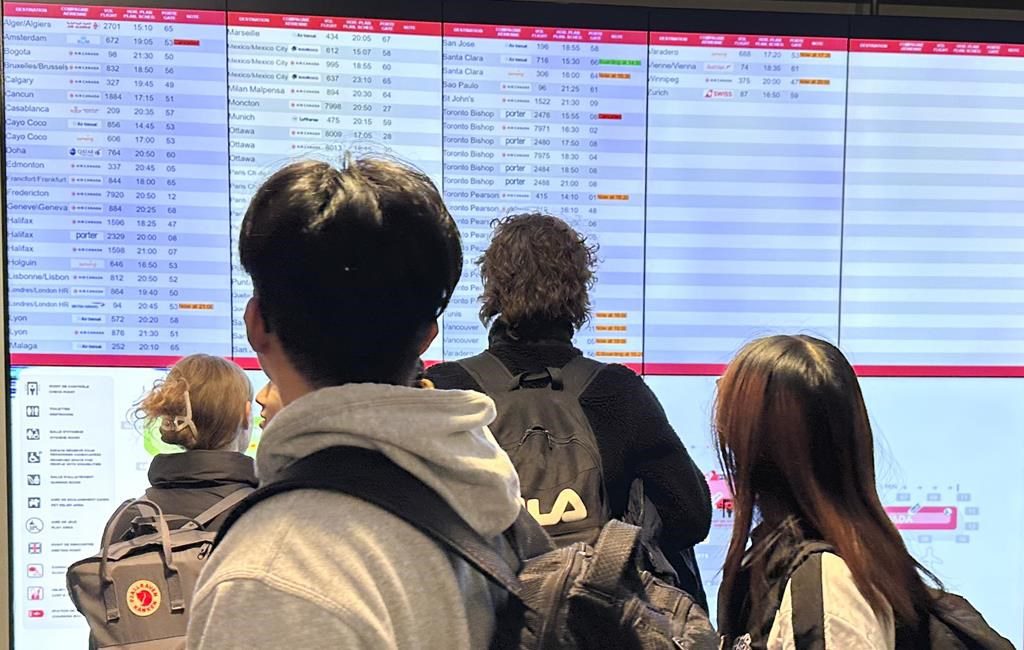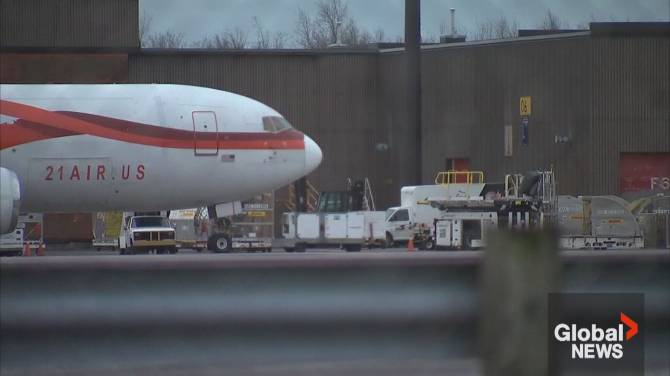The organization in charge of the Montreal airport is planning to spend nearly $4 billion to reduce congestion and increase capacity at the country’s second-biggest flight hub. The announcement was made Thursday in response to a rise in passenger numbers and car traffic last summer, which caused frustration among travelers trying to get to their planes on time.
This caused traffic jams on the road to Pierre Elliott Trudeau International Airport, leading car passengers to get out of their vehicles and carry their bags along the highway off-ramp to the airport, especially in the late afternoon and early evening.
The plans for the airport upgrades include a bigger road past the main entrance, new parking lots and drop-off areas, a satellite terminal, and a connection to the REM commuter rail line.
In a speech to the Chamber of Commerce of Metropolitan Montreal, airport authority CEO Yves Beauchamp said Thursday the aim is to complete the projects by 2028.
He told attendees in French at a downtown hotel, “We are in a race. We have four years to be able to welcome four million more people than today.
“We need to add capacity to both our welcome infrastructure on the land side and on the air side.”
After a significant drop during the pandemic, travel has rebounded, with a record 21 million travelers passing through the Montreal airport last year, up 32 percent from 2022.
“After a forced break of two years, we are back on the growth curve from before. But because of this interruption, we have less time to carry out the absolutely necessary work,” Beauchamp said.
Beauchamp also mentioned that he was in favor of allowing private capital once the work is done to finance more construction planned for 2035. The additional investments would cost an extra $3 billion to $4 billion, he told reporters.
He also noted that new financial tools would be needed.
The chamber of commerce has also called on the federal government to increase airports’ financial flexibility.
CEO Michel Leblanc warned, “If we are not able to change the way airports finance themselves, we will eventually hit a wall.”
During the pandemic, airports accumulated about $3.2 billion in debt to maintain operations as revenue dropped, even as Ottawa provided around $1 billion in support, according to the Canadian Airports Council.
With the resources available, Beauchamp plans to add remote plane parking lots and a satellite terminal hosting boarding gates by 2028.
Meanwhile, the section of the REM commuter line connecting the airport to the rest of the network is set to open in 2027, reducing reliance on car traffic.
The authority also aims to triple the capacity of the curbside roadway past the airport’s main entrance.
To make space for the wider, multi-level drop-off areas planned for 2027 and 2028, the airport intends to demolish a parking lot that can accommodate around 5,000 vehicles in 2026.
A new four-level parking lot with 2,800 spots opened in late February, while a second multi-level lot with 3,000 spots is set to open in 2026, Beauchamp said.
Environmental advocates briefly disrupted his speech to criticize the lack of action on climate change and the airport's expansion plans. They emphasized the greenhouse gas emissions from jetliners and chanted in French: Our forests are burning, and you show no concern.
The declaration comes after increasing numbers of passengers and a surge in car traffic last summer caused a lot of frustration among travelers attempting to catch their flights on time.




